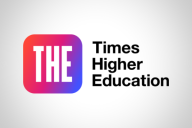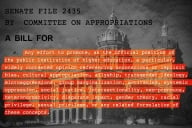You have /5 articles left.
Sign up for a free account or log in.
Michal Kosinski, a psychologist and assistant professor of business at Stanford University, knew his new study about training a computer to recognize gays and lesbians by their photos would be controversial: so much so that he sat on the paper for months before submitting it for publication.
But while Kosinski expected backlash, he didn’t expect the journal that had already accepted his paper -- a preliminary version of which has been widely viewed online -- to do what it did this week: initiate another review of parts of the study, citing new concerns about ethics.
“In the process of preparing the [manuscript] for publication, some concerns have been raised about the ethical status of your project. At issue is the use of facial images in both your research and the paper we accepted for publication,” an editor for the Journal of Personality and Social Psychology informed Kosinski, according to emails obtained by Inside Higher Ed. “The acceptance was conditional on the ethical clearance of the work to be published. We typically do this by having authors state the [Institutional Review Board] status of their work. However, in this particular case, there turns out to be some idiosyncratic issues that must be cleared before your paper can be set ready for publication.”
Even though the pictures of self-identified gay and lesbian people from dating sites used in the study were publicly available, the images were still copyrighted, the email says. Moreover, “the owners of the images posted them for different purposes. It may therefore be deemed unlikely that all of them would have granted consent for the use of their images in your research work.”
The journal requested that Kosinski send the notification of exemption that he received from his IRB, along with his IRB application for research involving human subjects. The American Psychological Association, which owns the journal, “needs to be assured” that Stanford’s IRB approved all aspects of the study, the email says, including that copyrighted pictures would be involved, and that human subjects would be employed to assess the pictures, stripped of any personal identifiable information, via the commonly used service Mechanical Turk. (The idea was to compare the algorithm’s so-called gaydar success rate with regular people’s.)
Kosinski said in an interview that despite the sensitive nature of his topic and subsequent findings, his study design was very conventional: it relied on publicly available facial images and anonymous Mechanical Turk workers. The study design and data sources were reviewed and approved by Stanford’s IRB. A copy of the approval letter was provided to Inside Higher Ed.
It’s highly unusual for a journal to accept a paper -- a process that involves extensive peer review -- and then ask for more information. And the request comes after a week of extensive media coverage of the paper, along with much attention from blogs and critics -- in particular gay rights groups GLAAD and the Human Rights Campaign. Both organizations have called the study “junk science” and a serious threat to people of all sexual orientations, based the model’s potential to be someday used against them.
Kosinski has pointed out that the facial recognition technology he used to build his model is already widely used, and that the point of the paper was to highlight privacy concerns in the digital age.
That threat is what prompted him to publish the paper, despite concerns about backlash, and post a version online before official publication, he said.
The latter choice was also a nod to science's push for greater data transparency, Kosinski said. Yet perhaps ironically, that choice -- and the prepublication backlash it enabled -- may have contributed to the journal’s most recent communication. Contrast the tone of this week’s email, for example, with one from the same editor sent in August, notifying Kosinski that his paper had been accepted. “Your work is very innovative, and carries far-reaching implications for social psychology and beyond," it said. "I am therefore very pleased to accept this version of the paper in [the journal]. Congratulations!”
GLAAD applauded the journal’s decision Tuesday, but a spokesperson did not immediately respond to a request for comment about whether the organization had been in contact with the publication.
“Academic freedom is a right of research professionals, but hyperbolic research claims around being LGBT can put people in harm’s way,” Jim Halloran, the organization’s chief digital officer, said in a statement. “The research identified a pattern of physical traits of a small subset of photos that people uploaded to internet dating sites, not that facial recognition could detect if someone is gay or lesbian. Months ago, Stanford and the researchers invited LGBTQ organizations to provide feedback on this research, but when concerns were raised, they acknowledged the limitations of the research and recklessly proceeded.”
Others questioned the journal's move.
Philip Cohen, a professor of sociology at the University of Maryland at College Park who quibbled with Kosinski’s conclusions on his blog, Family Inequality, said via email that journals usually defer to institutional IRBs. “If they approved it, then I don't see what the issue is,” he said.
Cohen has used his blog to offer much harsher criticism of past research involving gays and lesbians, including the now-infamous Regnerus study suggesting that children of parents who are gay fare worse than those with straight parents.
Some research, he said, “is so harmful that it should be protested through channels other than scientific debate, so unethical that the authors should lose their jobs or be ostracized.” But of Kosinski and Wang's paper, he said, “I don't see that here, based on the information I've seen.”
Cohen added, “I don't think we need to villainize these researchers in order to object to or disagree with their research. The paper was reviewed and accepted. It's part of the scholarly record, like a lot of other research I don't like.”
As for the copyright issue, Cohen said that studying publicly available information, such as dating service profiles, is “fine” as long as confidentiality is maintained: no names or other information that could be used to identify them.
David Nimmer, a professor of the practice in law at the University of California, Los Angeles, said that Kosinski’s study appeared to pose no copyright issues from a legal perspective, either.
While pictures are indeed copyrighted by the person who took them (or someone else by agreement), uploading a photo to the internet “inherently” means that it will be used for something, he said. And Kosinski’s paper doesn’t include photos of individuals, beyond composite “gay” and “straight” faces based on tens of thousands of photos.
“Is this pretense?” Nimmer asked rhetorically of the copyright issue raised by the journal. “I don’t see anything other than pretense. There very well may be more to it than I know -- somebody might have a legitimate concern -- but based on [available information], they’ve done a scholarly survey that looked at copyrighted images for no other purpose than that.”
Sara F. Hawkins, a Phoenix-based attorney specializing in social media law, agreed, saying that Kosinski and his co-author, computer scientist Yilun Wang, have a strong case for “fair use” of the photos under copyright law. Examples of fair use include criticism, teaching and research.
Editors of the journal passed on a request for comment to the American Psychological Association, which owns it. The association said in a statement that it collects information from authors that assures the research “received proper IRB or equivalent ethics review and approval or exemption for research published in our journals.” Authors also complete a form to assure the research was conducted in line with the APA Ethics Code for research with human and animal participants, it said.
In cases where questions about the ethics review process are raised, it said, “APA takes a closer look at the documentation verifying ethical review and approval or exemption. Given the sensitive nature of photo images used in the current study, we are currently taking this additional step with this as yet unpublished manuscript.”
Kosinski said he wanted to work with the journal before commenting further.









